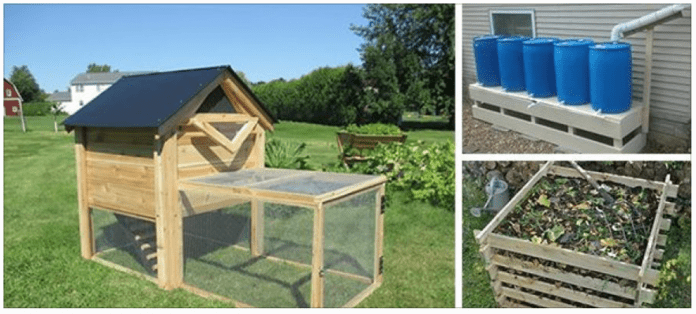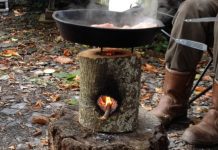Homeowners have several distinct advantages when it comes to prepping. Owning your own place means that you can do what you want with it. You don’t have to get permission from the landlord. Then, the changes that you make are yours. Whether they increase the property value or not, you aren’t going to lose them next year when you move.
Homeowners also have room to work with, even those with a small backyard. Apartment dwellers have to try and prepare, without that space.
So, what are you doing with all that space you have? Has it become part of your efforts towards self-sufficiency, perhaps in turning your home into a homestead; or is your backyard no different than any of your neighbors? Granted, we don’t want to be too obvious about what we’re doing, but there are ways of explaining away most projects we would undertake.
As a homeowner myself, I’ve enjoyed the opportunity to make use of the large backyard I have.
While I can’t come anywhere near being able to claim that I’ve turned it into a homestead, give me enough time and that might just happen. At least… I’ve got plans for the project which will make it that way.
In the meantime, here are some projects that I’ve done or am planning on doing. Perhaps you might like to do some of them yourself, and join me on the way to becoming more prepared.
Set up Rainwater Catchment
Perhaps one of the easiest prepper projects you can do on your property is to install rainwater catchment. If you already have gutters on your home, then all you need to do is build stands for rain barrels and redirect your downspouts into them. Depending on the size of your roof and how much rain you receive where you live, you could harvest enough rainwater to take care of all your survival water needs.
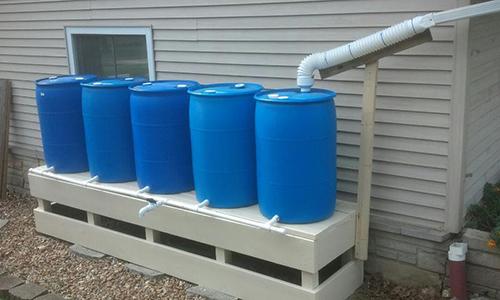

Of course, if you don’t already have gutters on your home, you’re going to have to add them. But that’s really not all that hard to do, especially if you have a one-story home. Your local home improvement center sells preformed sections of gutter, with splices to put them together. I’d highly recommend spending the extra money for the leaf catchers, to help keep your gutters free of dead leaves and the bacteria that will break them down.
One key in maximizing the effectiveness of your rainwater catchment system is to use multiple barrels in for each downspout, increasing your water retention capability. There are several ways of doing this, all of which involve plumbing the barrels together.
Start Gardening
If you don’t already have a vegetable garden and have enough land to grow one, why don’t you? Gardening is a great way to augment your grocery purchase, as well as prepare for a long-term disaster. Should we ever be faced with something that shuts down the grid or our supply chain in general, being able to grow your own food will be essential.
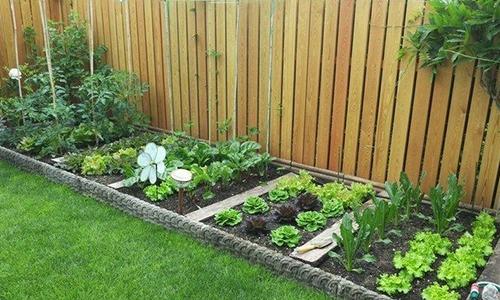

Two things about that: it takes time to learn how to garden effectively. There’s more to it than just scattering some seed and watering it every once in a while. You need to know how to get the most out of your garden and how to deal with problems that will arise.
The other thing is that you’re going to need a much bigger garden to survive, than what most people think. Forget about the idea of the four-foot garden, you want something more like the 1,200-foot garden. You’ve probably seen articles about people who grew their own food; in every case, they converted their entire backyard into a garden to do so.
Let’s get Some Fruit Trees in There
One thing that surprises me in the prepping community is how few people bother to plant fruit trees. We all talk about growing vegetables, but we don’t talk about growing fruit. Yet fruit trees require much less maintenance than a vegetable garden does, and once grown they provide a considerable amount of food.
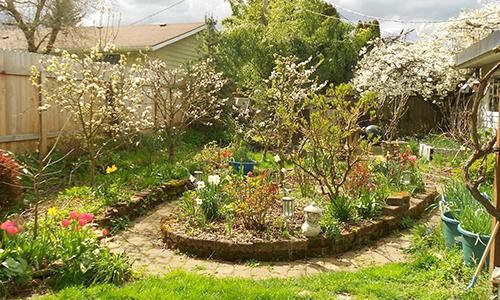

I’ve got over a dozen fruit trees in my backyard, almost all of which we’ve planted since buying the home.
Between them, I get several wheelbarrows worth of fruit each year, saving me having to buy that fruit. While not all that much by the standards of fruit trees, as they grow larger, I’ll get even more.
You Should be Composting
If you’re gardening at all, then you should have a compost heap or bin as well. Having had a composting bin for a couple of years now, I’d recommend putting it on the back edge of your lot, far from anyone’s home. I started out with mine right next to my garden, for convenience. That was a big mistake.
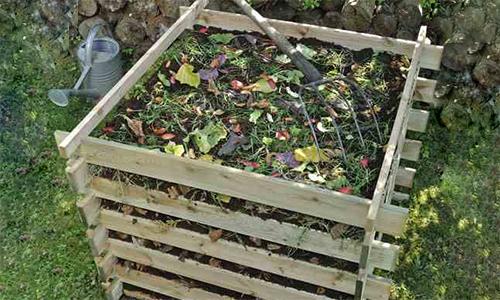

Composting provides an ongoing source of natural fertilizer for your garden, helping increase the size of your harvests. It also gives you something to do with all those tables and kitchen scraps, besides throwing them in the trash.
Related: Storage-Friendly Survival Gardening
Build a Chicken Coop
Vegetable gardens are great, but they don’t do much for providing animal protein. For that, you’re going to need some sort of animal. The question is… what can you raise where you live?
Many communities allow you to raise fowl, limiting you as to how many you can raise. With that being the case, it makes more sense to raise chickens for eggs, than to raise them to eat.
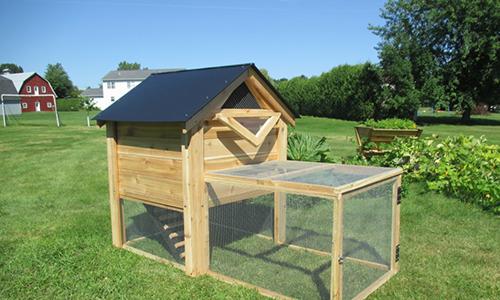

You’ll get more animal protein out of six layers giving you an average of four eggs per day than you will out of raising six fryers, which need to grow for a minimum of six weeks before they reach a minimum size for cooking.
The other advantage of those layers is that they will produce eggs for a number of years. But they’ll need to be six months old before they give you their first eggs. So you’ll want to start early, not waiting until the disaster strikes.
Related: Chickens are the Easiest Livestock to Raise
Dig a Pond and Raise Fish
Another good source of animal protein is fish. Many nutritionists will even tell you that it’s healthier to eat. By and large, fish are easier to grow than most animals, especially if you raise something like tilapia, which doesn’t require a whole lot of room.
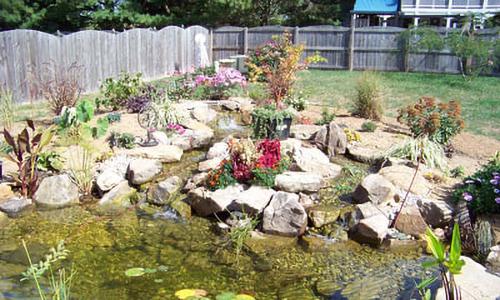

Making a pond is actually much easier than you might imagine. The trick is to start out with a plastic pond liner, essentially a thick piece of plastic sheeting. That solves the whole problem of making your pond waterproof, simplifying the job considerably.
With that, all you have to do is dig the hole, put in the water circulating system, and install the liner, weighting it down around the edges. Your water circulating system will filter the water and aerate it, just like in an aquarium.
The other problem you’ll have to deal with is feeding the fish. While you can buy commercial food for them, an easier solution is to start a worm farm. Buy 10,000 worms and put them in a big plastic bin with plenty of compost to eat. Then all you’ve got to do is grab a handful, any time you need to feed your fish.
Add a Vehicle Gate in Your Fence
If your backyard fence doesn’t already have it, I’d highly recommend adding a vehicle gate beside your home. This is a simple project that you can complete in one day. While not a necessity in normal times, it will give you the ability to move your cars into the backyard in a time of crisis. If your garage is as full as mine is, that’s the only way you’re going to hide your cars from marauding gangs in a time of social unrest.
Plant a Hedge for Self-defense
As I was just referring to, your backyard probably has a fence around it. Most yards today do. Hopefully, you’ve got a privacy fence, if not something better. Your neighbors don’t need an open window into what you’re doing. But if you’re like most people, your front yard doesn’t have a fence.
Although most people don’t like having a fence around their front yard, it’s a great way of increasing your home’s security. But not just any fence will do. It needs to be something that people can’t just jump over so that it controls how people gain access to your property. The idea isn’t so much to keep them out altogether but to have them come onto your property by controlled access. This allows you time to see them and to mount a defense, if necessary.
Few fences will do this, at least a few that aren’t so obvious as to make your home look like a protected government installation. However, a good hedge, grown from a plant that has thorns and with the branches interwoven, will ensure that nobody can get through in any way, except for your front gate. Grow it up to about four feet in height and three feet thick and you’ve got a great barrier.
Use Vines to Help Keep Your Home Cooler
We talk a lot about heating our homes, in the event of a grid-down situation, but you hardly hear anyone talk about keeping your home cool. That may not be important to people living in the northern part of the country, but for those who live in the south, cooling is important.
The shade is an important part of keeping cool, without using electricity. People who live in hot climates appreciate the value of shade. But your home itself really isn’t shade, as the sunlight striking it tends to warm it up inside. So what can you do?
If you happen to have shade trees, you’re fortunate, especially if they’re planted on the south side of your home. But it can take years to grow trees tall enough to use them for shade. Vines grow much faster and can be grown to help keep the sun from striking the walls of your home. While not a perfect solution, it can help.
The trick here is to build a trellis that’s set out away from the house far enough so that air can pass between the trellis and the home. A foot or so is usually enough. One way to do this is to anchor a pressure-treated 4”x 4” at ground level and use a heavy fishing line to weave a diagonal diamond pattern between there and the eaves of the home. This will provide an inexpensive trellis for vines to grow on, that’s not intrusive in its own right. Pick a type of vine that has twisting tendrils, as they will hold well to the fishing line.
Grab the Shovel and Build a Root Cellar
With all the food you’re going to be growing, you’re going to need a lot of storage space; preferably storage space that doesn’t require electricity. Our ancestors solved this problem long ago, by digging root cellars behind their homes. A root cellar is a belowground room, used primarily for storing root vegetables. They will usually hold a temperature of 55°F.
The best way to build a root cellar is to dig a big enough hole that you can make an actual room, whether from cement blocks or earthbags. You’ll need some sort of staircase to get down into it, as well as a pump to remove any water so your root cellar can’t flood.
If you don’t have the time or inclination to make such a structure, then you might want to consider burying an old refrigerator on its back, with the doors at ground level. That will work as a smaller root cellar, especially if you have it in the shade so that the sun doesn’t shine on it.



